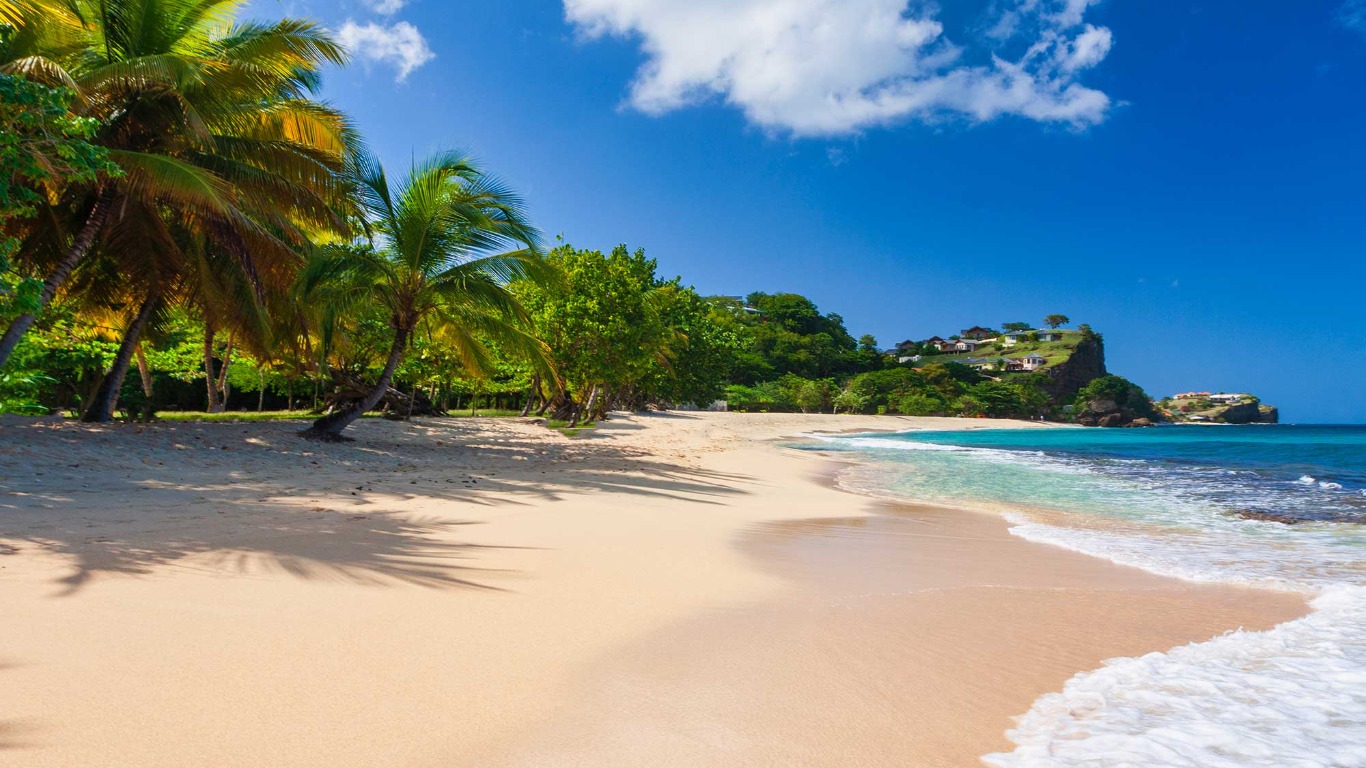Sugar and spice: why you've got to go to Grenada
Groves of nutmeg and cinnamon, endless rum and seductive chocolate are the backdrop to this flavour-packed and sunny Caribbean island. As it's added to the UK's 'green list' we find out how to make the most of it.
Why go to Grenada?
An underrated gem of the Caribbean, Grenada is an unspoilt natural paradise with an incredibly fascinating history and an intoxicating gastronomic offering: spices, tropical fruits, seafood, rum and some of the world’s finest chocolate are all produced here. Just 12-degrees north of the equator, it remains refreshingly free from mega-resorts, has a low crime rate and offers an authentic Caribbean experience that’s fairly rare these days.
Located at the southernmost tip of the Windward Islands around 100 miles north of Venezuela, the tri-islands of Grenada, Carriacou and Petite Martinique enjoy the warm Caribbean Sea to the west and the fresh Atlantic to the east. Sitting outside of the hurricane belt, it's a firm favourite with sailors looking for a safe spot to winter their yachts but still benefits from the rainy season, which contributes to the abundance of produce growing on its volcanic slopes.
Getting to Grenada
Grenada is linked to North and South America, Europe and the Caribbean with British Airways and Virgin Atlantic both running direct services from Gatwick. This is a slight misnomer, as you usually park up for a quick stop in St Lucia for an hour while passengers get on and off the plane, but there's no need to disembark. From there it's 40 minutes until you land at Maurice Bishop International Airport, located right at the southern tip of the island. In total it’s a 10.5 hour flight so you can dodge the jet-lag: if you’re travelling from the UK, Grenada is only five hours behind BST, so get an early night on your first day and you’ll be right as rain.
For more information about the island and how to get here see Pure Grenada.
Getting around Grenada, Carriacou & Petite Martinique
A quick guide to Grenada, Carriacou and Petite Martinique
Grenada is divided into six parishes named after Anglo saints of the UK: St George's is the capital and centre of commerce on the western edge, then clockwise follows St John, St Mark, St Patrick at the very north (home to most of the chocolate companies), St Andrew on the east coast, which has the Grand Etang Lake and is much-covered with protected forests, and finally St David in the south-east of the island.
 Discover Grenada
Discover Grenada
The two islands of Carriacou and Petite Martinique are also part of the nation of Grenada and sit just 20 miles off the northeastern tip towards St Vincent and the Grenadines.
Car hire: Most people choose to hire a car. At 113 square miles Grenada is roughly the size of the Isle of Wight but you really need wheels to see everything this remarkable place has to offer. Car hire costs between US$50 (£39) and US$75 (£58) a day, and if you visit between July and August you need to hire for a minimum of three days. Expect a smooth, mosty traffic-free journey around the island with the exception of rush hour, which is usually between 7am and 8am and 4pm and 5pm on the roads around St George's.
READ MORE: Our full guide to Anguilla
Top tip: it’s worth taking both US dollars and East Caribbean dollars as both are accepted around the island. In most places you can pay with US dollars, but they won’t be able to give change on high value notes.
Taxis: There are taxi firms – most famously King Elvis, whose fleet you’ll see all over the island – that can take you from A to B at pre-arranged times but it’s not a cheap option: the 20 minute journey from the airport to the capital of St. George's will set you back around US$20. The King also runs tours around the island which is a great way to spend your first full morning (and is covered on day two of the itinerary) and can also help visitors in wheelchairs to arrange accessible transport.
Buses: If you want to experience local life jump on one of the minibuses that run to key locations and cost just a couple of East Caribbean (EC) dollars, but these only go to the airport by request.
Where to stay on Grenada
Low-cost yet lovely: Travellers on a budget can do no better than the Seabreeze Hotel, which is a short hop away from Grand Anse Beach. A small but friendly place with the most Instagrammable pink exterior, the lovely owner Lotte and her staff will go above and beyond to make your stay wonderful. All the rooms have air con, a tv and a kitchenette and there’s a shared outdoor kitchen for guests to make coffee and simple meals.
Affordable blow-out: For those able to spend a bit more, Grenada does luxury effortlessly. The boutique Calabash Luxury Boutique Hotel does the full swan-shaped towels and petal-strewn beds routine to a T. The pool and outdoor space is paradise and the food is incredible making it perfect for a romantic getaway.
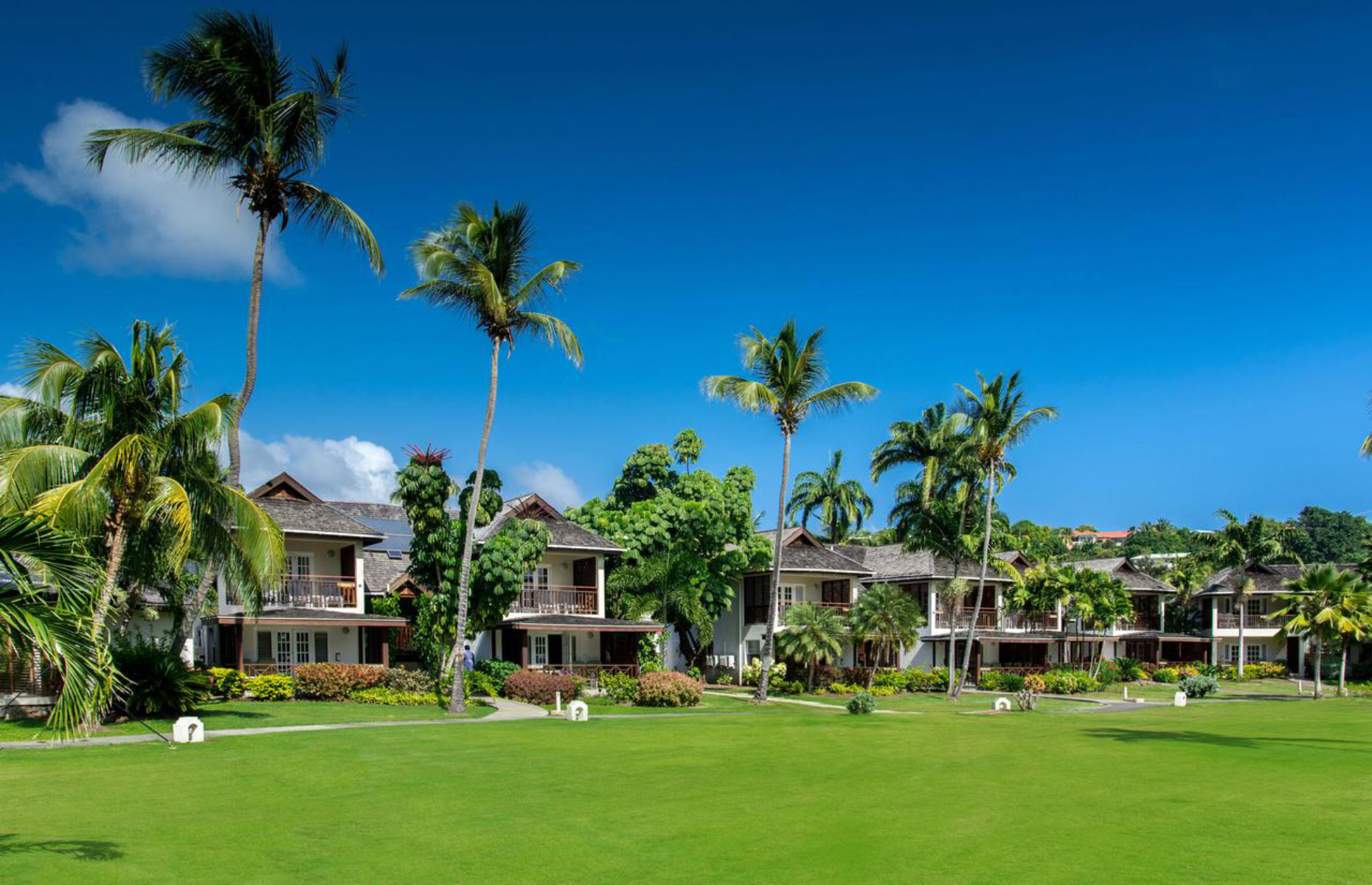 Calabash Luxury Boutique hotel/booking.com
Calabash Luxury Boutique hotel/booking.com
Eco-friendly self catering: For a superb self-catering option stay in one of the 32 guest houses at the eco-friendly Blue Horizons Garden Resort. Perched on the gentle slopes of St George’s you’ll have access to over six acres of lush tropical manicured gardens and sea views of the white, powdery sands of Grand Anse beach.
The ultimate Grenada itinerary
Day 1: Hit the beach
Make straight for Grand Anse: After checking into your hotel, there's no better way to freshen-up post-flight than by heading straight down to Grand Anse to have a pre-dinner swim in the beautiful clear waters. Located on the southwestern coast of the island, Grenada’s most famous beach is hugged by the gentle waves of the Caribbean Sea. It’s the perfect temperature for swimming and snorkelling.
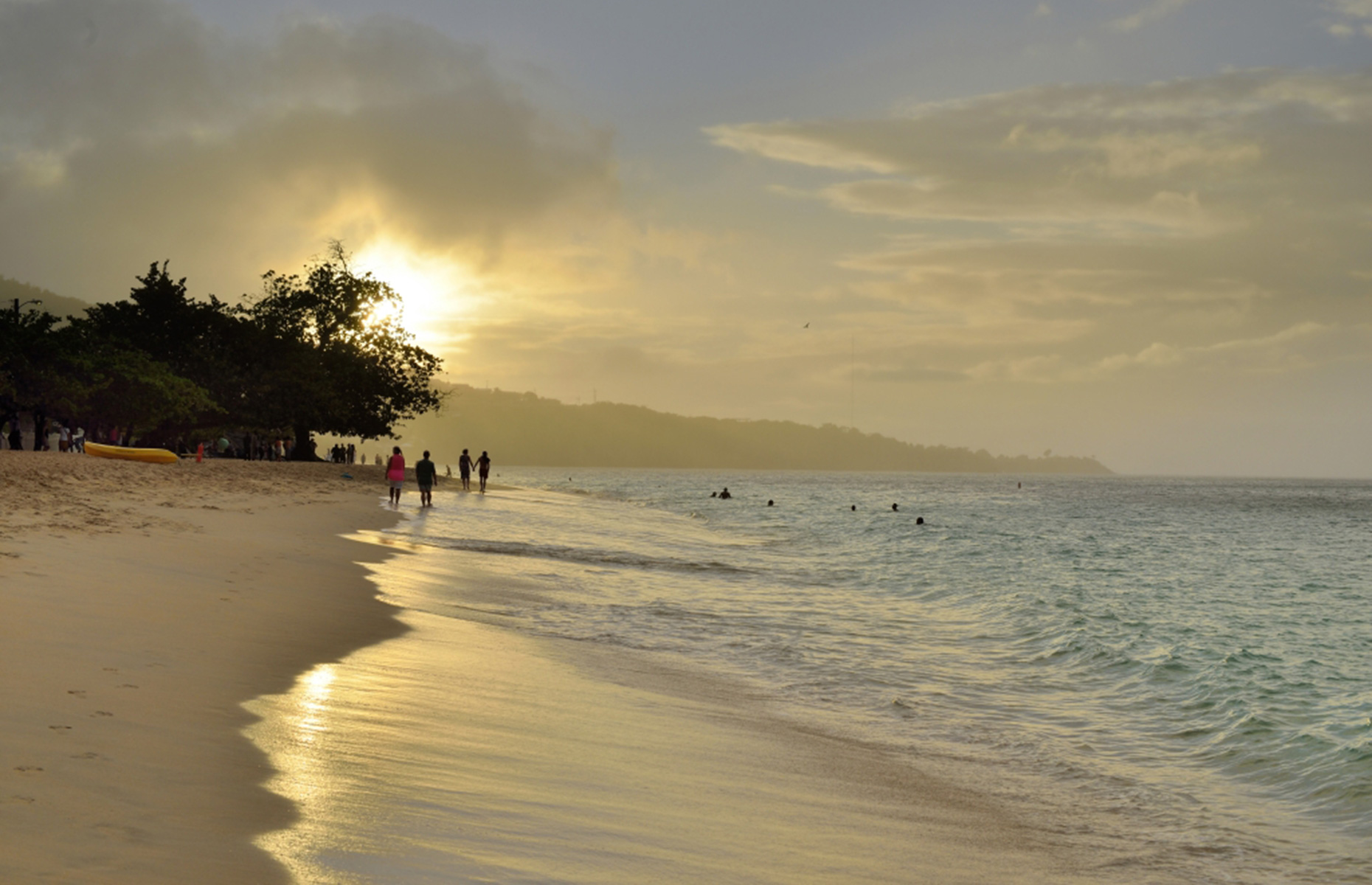 Jerry Dohnal/Flickr/CC 2.0
Jerry Dohnal/Flickr/CC 2.0
Set up camp for a few hours on the pristine white sands until sunset. Rent a sun lounger and parasol if you’re sensitive to the still-searing afternoon sun or enjoy a massage from one of the passing vendors who will occasionally offer their services as they walk the beach.
Get stuck into: ribs, grilled local fish and chocolate beer at the West Indies Beer Company. Get a tasting board to try a few of the pale ales and beers produced on the island in this independent start-up that’s become a lively hangout for passing yachters, locals and tourists. Go for the party atmosphere and live rock bands, who seem to straddle a please-all mix of Santana and Pink Floyd covers.
Day 2: Chocolate, rum & waterfalls
Take a tour of the Caribbean side of island: to explore Grenada’s capital of St George's, plus a few sites of enormous historical and natural importance to give you a taste of just how much this tiny place packs in.
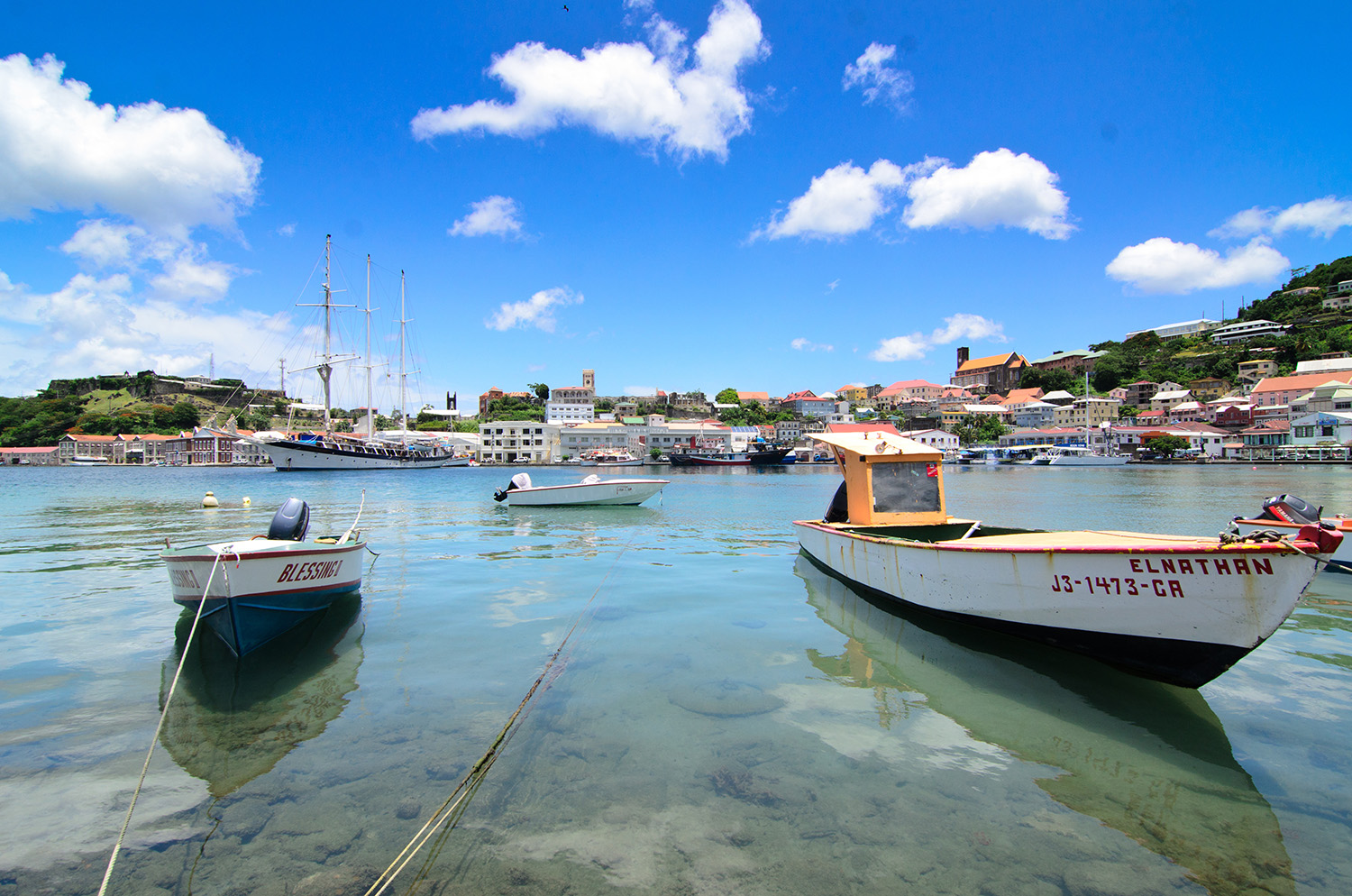 The Carenage in St George's, Grenada - Picture by Orlando Romain
The Carenage in St George's, Grenada - Picture by Orlando Romain
Stroll around the historic town of St George's, taking in the picturesque Carenage (basically, the inner harbour) fronted by colourful Carriacou sloops and ships tied to old French cannons. Enjoy the sight of 18th-century warehouses topped with their red roof tiles (brought over on European ships as ballast) that point to Grenada’s past as a former French and English colony. They are also where this island’s treasures were stored for export, namely the cinnamon, nutmeg, turmeric, cloves and bay leaves that earned its name as the Spice Isle.
Discover more history at: the Grenada National Museum, one of the oldest buildings in St George's, has variously existed as French barracks, a prison and as the former Antilles Hotel.
Visit the House of Chocolate: for a feast for the eyes, nose and taste buds. This shop/cafe is beautifully put together by the owner Magdalena Fielden, who also organises the annual Grenada Chocolate Festival. She has all the island’s main producers represented plus handmade chocolate bon bons, cakes and biscuits of her own recipes. There’s also a wonderful exhibition showing the history of the Caribs and every kind of choc-based souvenir you can think of.
 Discover Grenada
Discover Grenada
Visit the covered Spice Market: to stock up on edible souvenirs, pretty conch shells and the locally-made dollies from the adorable vendors who run the stalls here. Don’t try to haggle, though: the price marked is the price you pay.
Drive: up to the Napoleonic Forts Matthew and Frederick to learn about these centuries-old defences and their dual role as centres of political action in Grenada’s struggle for independence. Climb to the top to soak up the stunning panoramic views across St George's and the harbour and feel the strong breeze that blows in from the Atlantic.
Head inland: through the lush rainforest and towards the dramatic peaks of Mount St Catherine, the tallest point and youngest of five volcanoes that make up the island. Stop off at Concord Falls for a refreshing dip, watching the daredevil locals do back flips off the rocks into the deep clean pools.
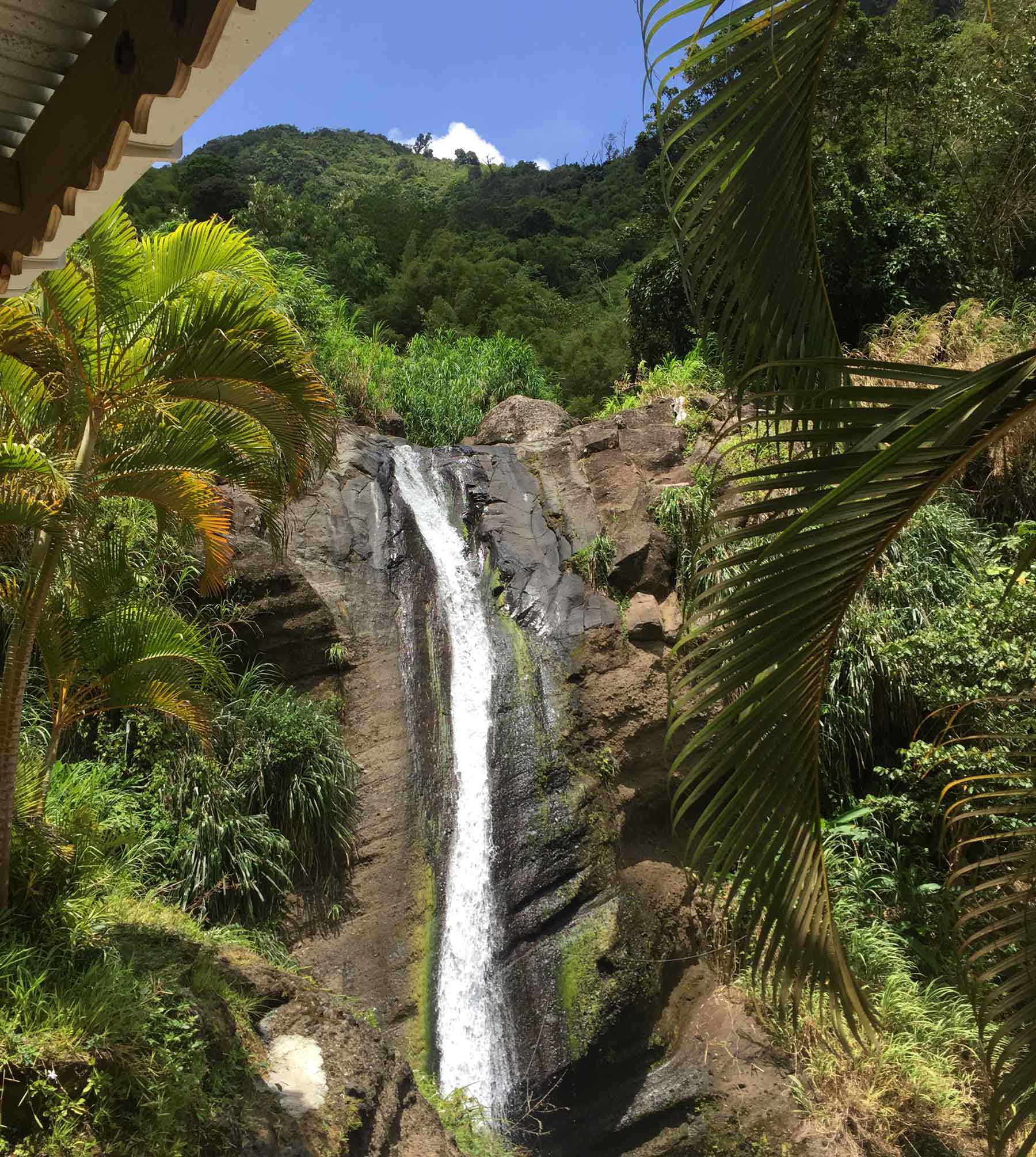 Natalie Davies
Natalie Davies
Stop for lunch at: Belmont Estate, a 300-year plantation and working cocoa farm and chocolate factory. The menu includes amazing local dishes like Callaloo soup and fresh juices from the fruit of the spice trees – you’ll have never tasted anything as fragrant as nutmeg juice! After lunch take the tour and learn how the estate processes the cocoa using the same 18th-century buildings and methods, shuffling the cocoa beans in the sun by foot before they are ready to be turned into some of the world’s finest organic chocolate. Expect to be significantly poorer after visiting the chocolate shop too...
Try a tipple: at the River Antoine Rum Distillery – the oldest working distillery in the Western hemisphere.
Drive through: the Grand Etang Lake and Forest Reserve, stopping to see the waters that now fill this extinct volcano. Look out for the mona monkeys that live in the forest.
Take a sunset cruise: onboard the traditional Carriacou sloop, Savvy. These set off at around 4pm to make it back by sundown, so you can see the Caribbean sunset in all its glory while sampling Grenadian rum. Dinner is usually included.
 Discover Grenada
Discover Grenada
Day 3: History & nature
Take a scenic ocean view drive: up to the bustling fishing village of Gouyave and take the tour of the intoxicating Nutmeg processing plant. This might sound a bit like an educational school trip but the smells alone are worth an hour of your day.
Step back in time: with a tour of the north coast. Grenada’s indigenous Carib people were carving petroglyphs into the rocks as early as 900 AD. Stop by Duquesne Bay to see these extraordinary artforms on the black sand beach where the tribes had a settlement.
Book ahead for lunch: and a knock out view at Petite Anse. This beautiful family-run boutique hotel has one of the best verandas on the island, overhanging the small cove after which it’s named. Order saltfish fritters to start and, if it’s in season, lobster, or the fish of the day with the house special jerk sauce. Try one (and we really do mean just one) of their blower cocktails, or go for a locally grown guava juice instead.
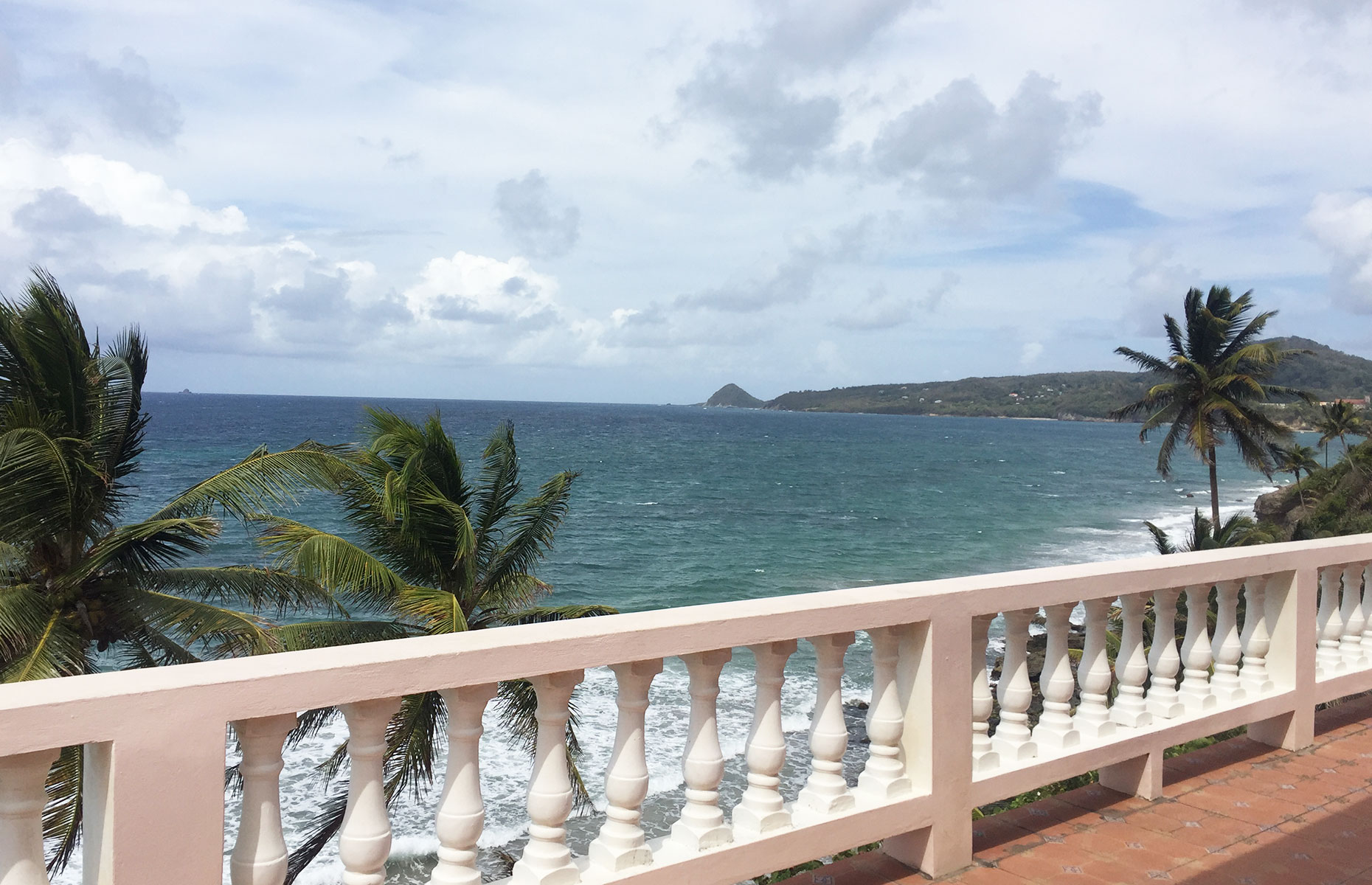 Natalie Davies
Natalie Davies
Celebrate the courage of the Caribs: Carry on past the most northerly small town of Sauteurs and Leapers Hill, a memorial with a dark history where the few remaining Carib tribes jumped to their death rather than surrender to the French forces. There’s a museum there that pays tribute to those who lost their lives and has a collection of Carib artifacts if you want to explore further.
Go into the wild: at the 450-acre Levera National Park, Grenada’s most sensational coastal sanctuary with outstanding coral reefs and seagrass beds that shelter lobster and the colourful reef fish that thrive in the pristine waters. You can hike through the lush rainforests and visit the mangrove swamp and a lagoon that’s home to herons, black-necked stilt and a wide variety of flora and fauna. If you visit between March and August there are guided tours on Levera beach (pictured below) where you can hopefully catch a glimpse of the leatherback turtles that come ashore to lay their eggs.
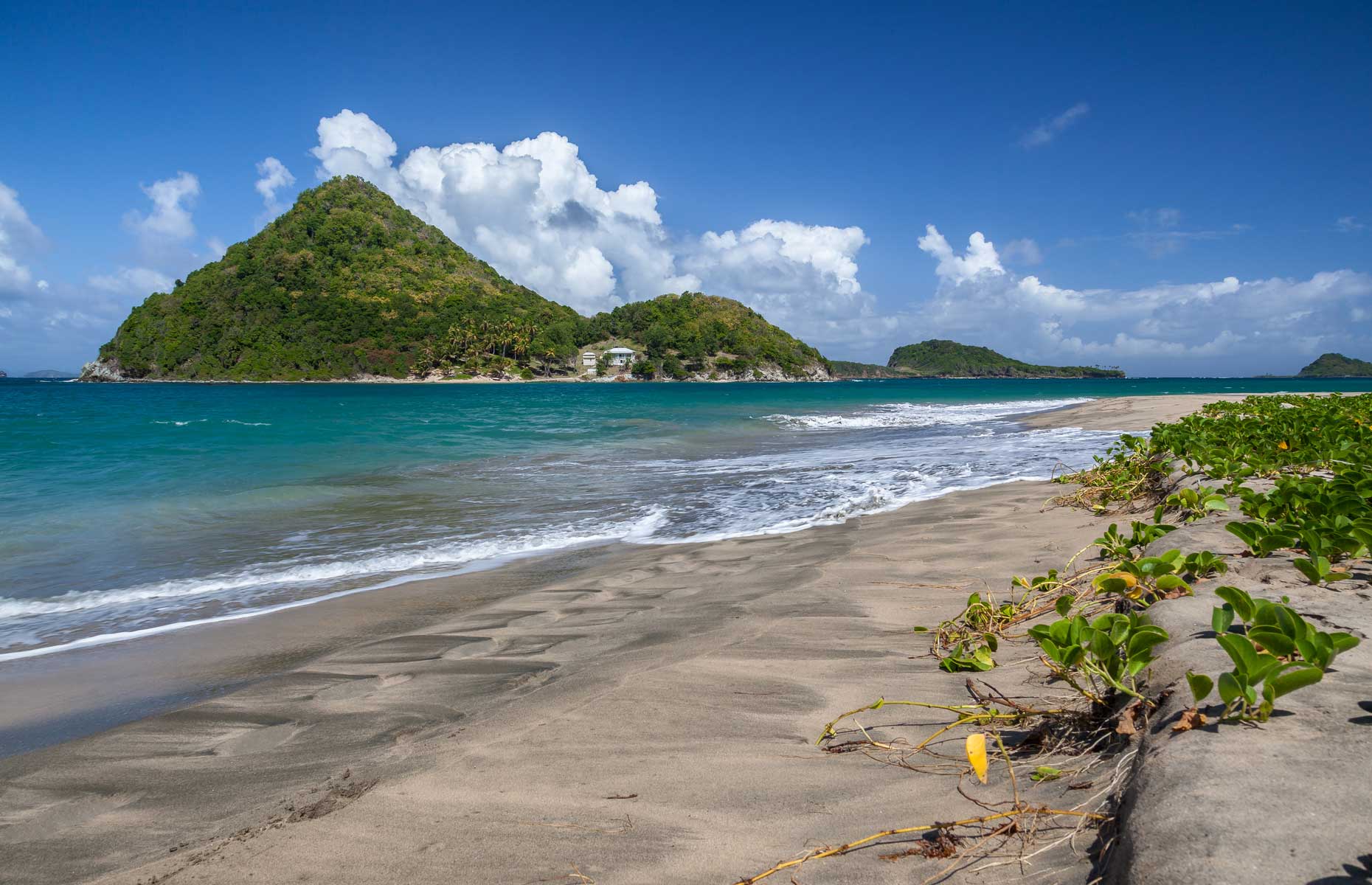 Hugh O'Connor/Shutterstock
Hugh O'Connor/Shutterstock
Party the night away: at Dodgy Dock, the lively restaurant and bar that’s famed for its live music and themed nights. This is a one-stop shop for dinner, drinks and dancing with the beautiful backdrop of True Blue Bay. Wednesdays are a particular highlight, with Grenadian food and music, or hit it up on a Friday for Mexican cuisine and chocolate margaritas.
Day 4: Underwater adventures
Set out to sea to visit: Carriacou and Petite Martinique – two practically deserted islands of the north coast of Grenada. A ferry runs the 20-mile trip to Carriacou and then on to Petite Martinique and both of these fascinating places are well worth a visit, particularly if you can catch one of the unique interpretations of the Bard’s plays during the Shakespeare Mas festival. But the main pull of these islands lays beneath the waves.
Dive at the Underwater Sculpture Park: Any serious diver can’t pass up the chance to visit the Underwater Sculpture Park that’s become famous for its breathtaking artworks at the bottom of the sea. Over 100 individual statues by British artist, Jason deCaires Taylor are arranged on the seabed at Molinere Bay, around 10 minutes from St George’s by boat, at depths ranging from five to 30 feet deep. Non-diving folk can see the some of pieces with a snorkel and mask or onboard a glass-bottom boat.
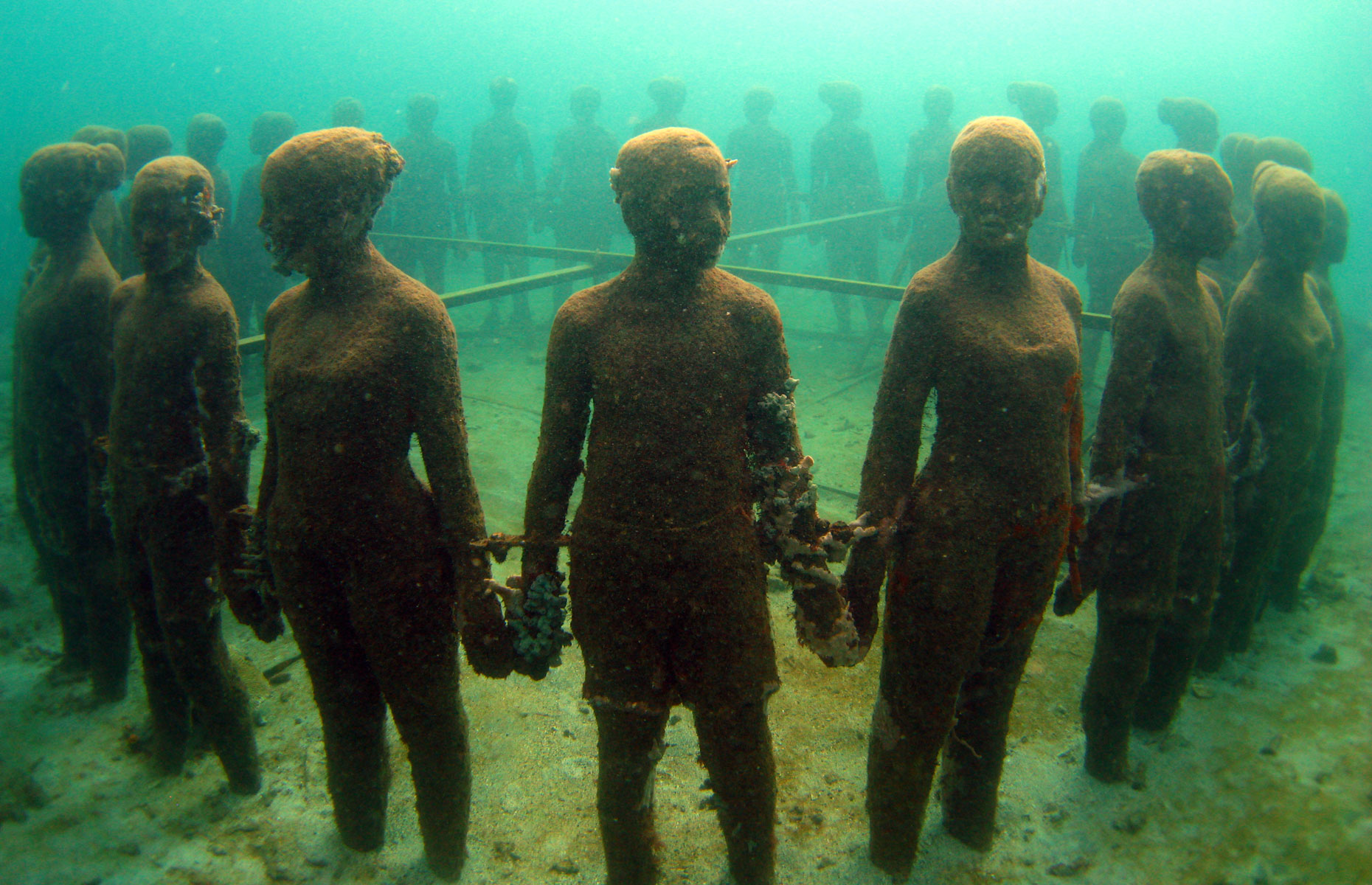 R Gombarik/Shutterstock
R Gombarik/Shutterstock
There are around 20 wrecks between Grenada and Carriacou offering something to all levels ranging from shallow water snorkelling in marine protected areas to the awesome sight of the wreck of Bianca C, a cruise liner that sank there in 1961. Experienced divers can visit the Twin Tugs (Westsider and Boris) near Mabouya Island, said by those who know to be an unforgettable dive, or you can hire a private charter boat for the morning to explore the Tobago Cays Marine Park and swim with turtles and rays among the soft coral forests.
READ MORE: The world's most incredible underwater attractions
Have lunch at: the small but sweet Kayak Kafe & Bar overlooking the beach. Try the local fish and sample the amazing fresh fruit combinations before wandering down the aptly-named Paradise Beach and checking out the vendors market and independent shops around Hillsborough.
Visit Windward: to see the traditional boat builders working on Carriacou sloops and take a whistlestop driving tour around the island, passing the old French and English plantation houses, waterwheels and incredible views from Belair National Park. Head back to the ferry to catch your ride home.
Have dinner at: BB’s Crabback and ask for a table that has a plum position overlooking St George’s harbour. BB himself – a native Grenadian who moved back to the island with his English wife after running a restaurant in West Ealing, London – will make this signature dish of the house. Crab meat is seasoned and stuffed ‘back’ into the shell, topped with cheese and served with fluffy fried bakes – a sort of savoury Grenadian donut that you can expect to become addicted to. Try the goat curry or the local mahi-mahi fish in a delicious jerk seasoning. Wash down with a rum punch, but make it only one or you’ll be on the floor.
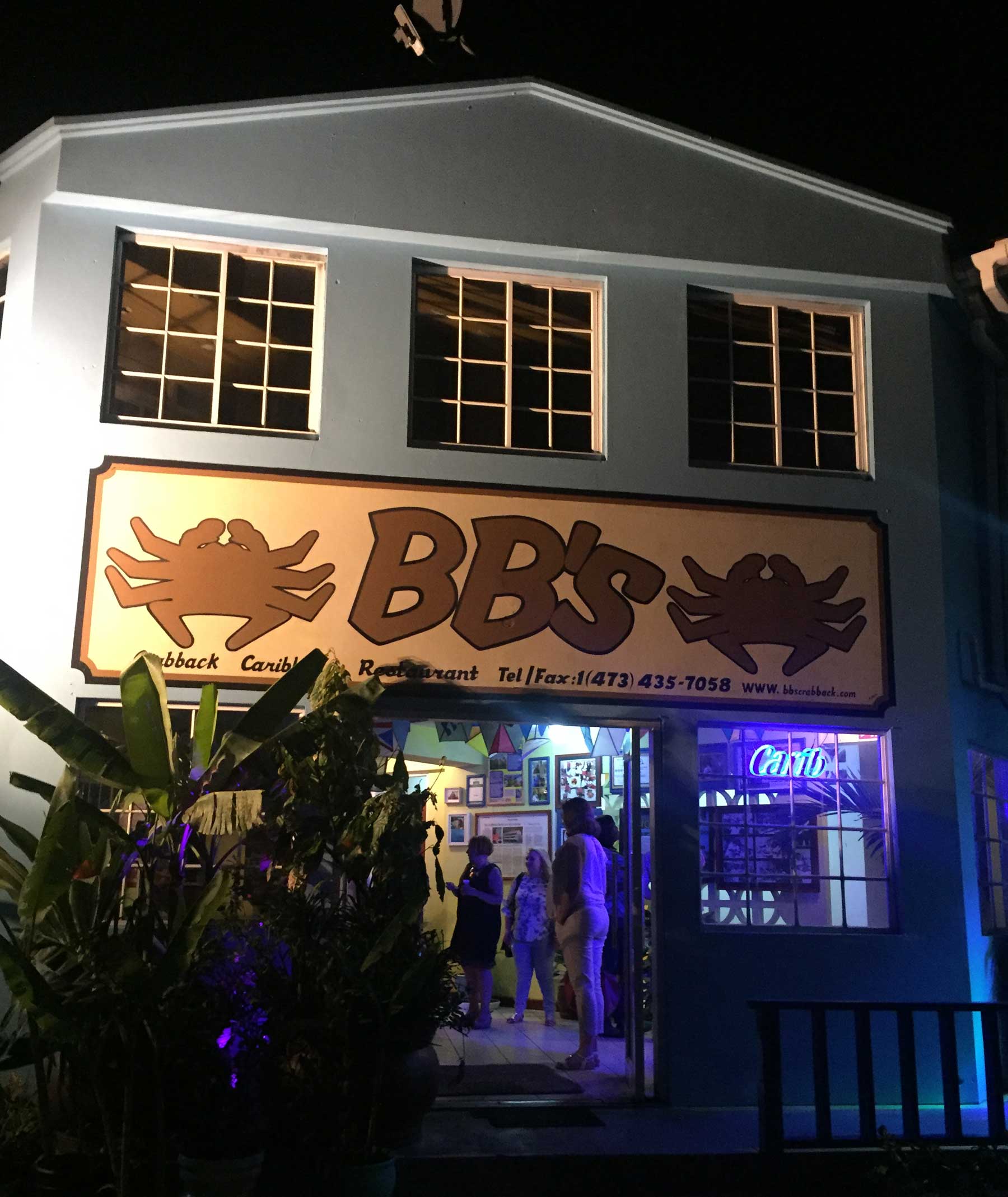 Natalie Davies
Natalie Davies
Day 5: Make the most of the beaches
Take a trip to: the smaller beaches around the south of the island. Take a car to breakfast at La Sagesse boutique hotel and explore their tropical gardens before heading to the secluded grey and white sand beach, considered one of the most beautiful in the world.
Spend an hour at the Westerhall Estate Rum Factory: to take a tour of the 18th-century ruins and museum before sampling some of their wares and picking up a bottle to take home with you before making the short journey to the airport. If there’s still some time to kill make another small detour to check out Morne Rouge bay and have a final paddle in the shallow azure waters that gently lap at 400 metres of pure white sand.
Festivals
Chocolate festival
Every year in May the Grenada Chocolate Festival celebrates the world renowned tree-to-bar organic cocoa industry, held at fascinating and beautiful locations across the island.
A packed programme of events introduces you to the three main chocolate factories on the island: the prestigious Belmont Estate, Crayfish Bay’s ethical DIY plantation where the farmers keep the profits from everything they produce on the land, to the revered Grenada Chocolate Factory, whose late founder Mott Green was the first to import the technology for production of chocolate in Grenada.
The stories you’ll hear are inspiring and life affirming, as the people share their personal journeys out of poverty and passion for for the work.
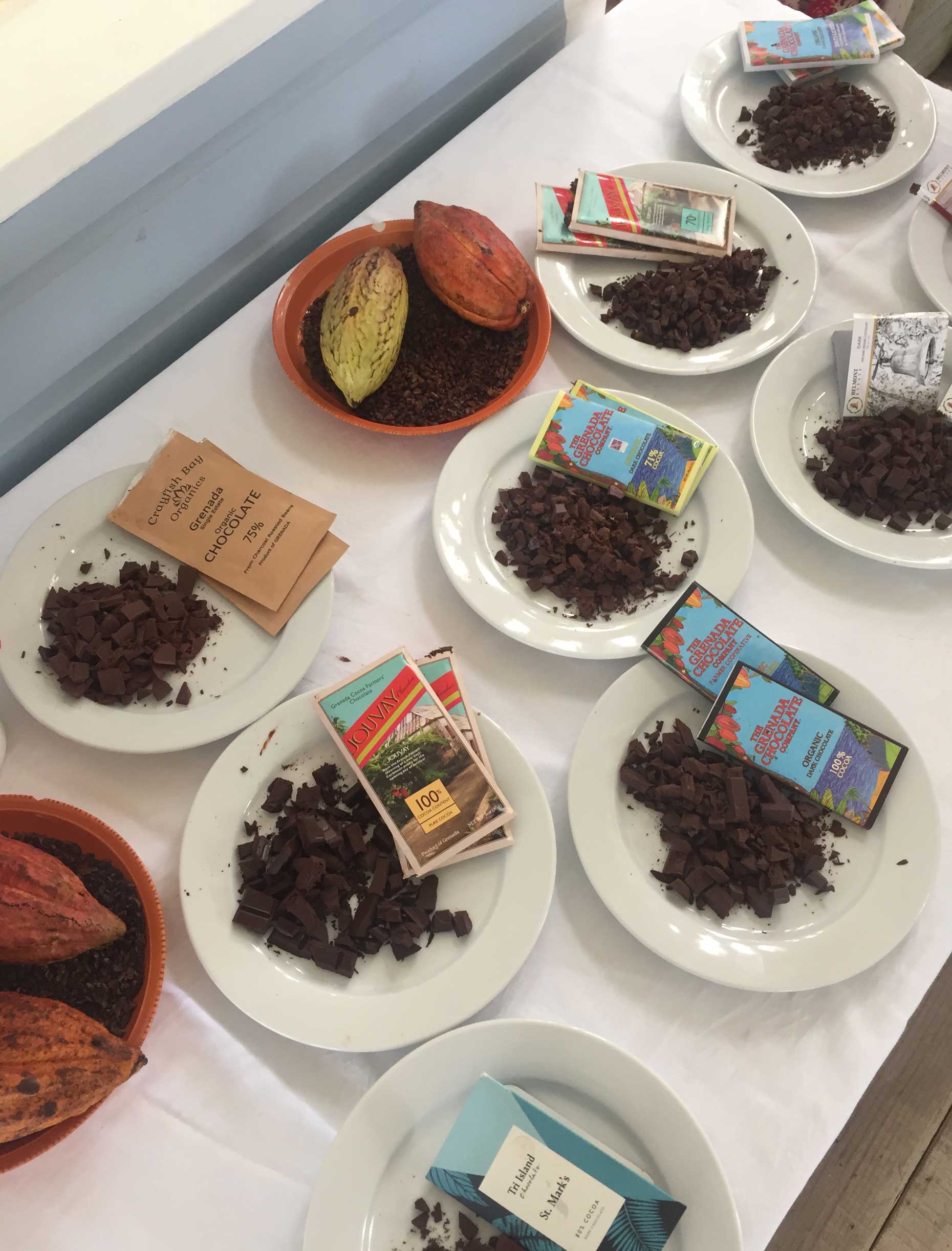 Natalie Davies
Natalie Davies
Finally, of course, you’ll get to eat more fine chocolate than you’ve probably ever eaten before.
This is a wildly different beast from your average bar of milk; it’s a gourmet gastronomic experience. Even the cocoa beans, which grow side-by-side with banana palms and nutmeg trees in the fertile volcanic soil, are considered some of the best in the world.
You’ll learn during demonstrations and talks how to make chocolate and sample it in many different guises from sweet, lychee-tasting cocoa beans straight off the tree to smoky roasted cocoa nibs and refreshing cocoa tea. Best of all, you’ll do guided tastings – very much like a fine wine tour – where you’ll learn to appreciate some of the flavour notes in this sensational chocolate.
As the last blast in the Caribbean carnival circuit, you can pretty much guarantee that this celebration of Grenadian music and culture is going to be a belter.
Usually held on the second Monday and Tuesday in August, Calypsonians, steel pan ensembles, so called ‘Fancy Mas’ bands, perform and compete for the colourful revellers who dance all day and night in bright colours and elaborate costumes.
Unlike other carnivals in places like Barbados who charge hundreds of dollars for exclusive closed events, most of the Spicemas sound systems throw free parties in the street and on the beach, and you can bring your own food and drink.
Map of Grenada
Main image: Peter Krocka/Shutterstock
Comments
Be the first to comment
Do you want to comment on this article? You need to be signed in for this feature
